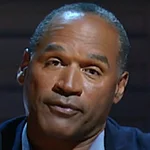 |
| Tommy Morgan |
It’s no secret that the fields of public relations and marketing have evolved significantly—especially in recent years. The advent and prevalence of digital communication has created a need for increased collaboration between departments to create and sustain continuity in an organization’s messaging. From content development and social media, to pay-for-play and earned media opportunities, the line between the disciplines has started to converge and the path forward is becoming anything but clear.
With an increased focus on customer experience comes further blurring of the lines between traditional owned, earned, and paid media, which has elevated expectations of public relations campaigns to produce marketing outcomes. It’s no longer sufficient to “simply” issue press releases, secure speaking opportunities, and drive thought leadership in the media, as these added expectations have transformed PR into an integrated service offering that includes social media, content development, influencer engagement and much more.
The blending of these fields has also forced modern PR campaigns to become ROI-driven from start to finish. Everything from referral clicks on earned media articles to social media follows, clients evolving expectations require a consistent, integrated approach to ensure PR practitioners are achieving and clearly illustrating the value of their campaigns.
The integration of PR and marketing is inevitable. While one industry focuses on building and maintaining an image in the marketplace, and the other focuses on selling, there is ample opportunity for communication teams who embrace more holistic integrated marketing and PR approaches to maximize their success.
Here are three leading factors PR and marketing strategies should be integrated moving forward:
Aligned Goals = Greater ROI
From a PR perspective, goals are often related to increased awareness, thought leadership, reputation management, community building and influencing sales. To reach these goals, PR practitioners generally use some form of content, ranging from email pitches to contributed articles. From a digital marketing perspective, goals are often tied to quantitative metrics like increased website traffic, sales and leads. Similar to PR, digital marketers often use content to help drive traffic and capture leads.
As marketing and PR teams begin establishing goals, it’s important that both are aligned on what the top priorities are for the business unit. If the top priority is to support lead generation for sales teams, then the PR strategy should focus on specific verticals to support lead generation through third party sites. By aligning PR and marketing goals to help the overall business objective, you’re able to reach your target audiences in a highly targeted manner through a number of communication channels as opposed to the ROI you would see if each team operated in a vacuum.
Improved Brand Presence and Messaging
A successful brand in today’s oversaturated marketplace is rooted in an organization’s ability to establish a powerful identity while maintaining a consistent image at every touchpoint. Combining PR and marketing into one practice makes it easier to align messages across print, broadcast and digital platforms. This practice means that the messaging in press releases can be easily aligned with the message being communicated across the marketing mix and vice versa.
It’s also critical to have PR and marketing operations integrated for when crises arise. Crisis management is no longer just a media relations issue. The prevalence and timeliness of social media has turned crisis management into a race to stay ahead of the 24/7 online news cycle. Regardless of which department social media is housed under in your organization, having your PR and marketing strategies integrated removes a layer of internal red tape that will help you stay ahead of a crisis and maintain your brand image.
Streamline Content Development
As alluded to earlier, perhaps the biggest area of overlap between PR and marketing is content development. While PR and content marketing teams are working day-in and day-out to produce thought-provoking and engaging content, there are a few ways the two teams can integrate their efforts for maximum impact, including:
- Syncing Editorial Calendars—While many media outlets are moving away from editorial calendars that guide their focus areas during the year, PR teams can still keep a pulse on what publications are covering by keeping on top of developing trends and outlining recurring topics that are frequently covered at any given time. While PR teams will use this information to pitch media interviews and contributed articles, content marketing teams can also use these themes to coincide potential media coverage with a range of marketing collateral like blogs, case studies, eBooks and more.
- Bolstering Event Promotions—Before any event—put on by the organization or not—it’s imperative that PR and content marketing teams have a coordinated message. Because events are a prime opportunity to drive leads and increase ROI, the primary goal during events should be on maintaining a consistent brand message while influencing attendees to engage with your organization’s content and in-person installations.
An integrated PR and marketing strategy is no longer an option, but a requirement for those who want to stay competitive in the marketplace. Single-channel marketing campaigns, standalone media relations efforts and siloed lead campaigns are no longer viable in the digital age. Every organization—regardless of size—now needs to coordinate across social media, public relations, marketing and creative efforts to ensure that ROI from each branch of the communications department is clearly communicated and success metrics are being met. Many organizations already have the processes in place to run successful integrated campaigns, all that’s lacking is the communication to align goals, strategies and tactical campaigns.
***
Tommy Morgan is a public relations account manager at Sage Communications. He was the 2017 Bulldog Reporter PR Up and Comer Award winner and named Communications Professional of the Year in the 2019 Stevie Awards.


 The techniques deployed by OJ Simpson's defense team in the "trial of the century" served as a harbinger for those used by Donald Trump... People worry about the politicization of medical science just as much as they fret about another pandemic, according to Edelman Trust Barometer... Book bans aren't restricted to red states as deep blue Illinois, Connecticut and Maryland challenged at least 100 titles in 2023.
The techniques deployed by OJ Simpson's defense team in the "trial of the century" served as a harbinger for those used by Donald Trump... People worry about the politicization of medical science just as much as they fret about another pandemic, according to Edelman Trust Barometer... Book bans aren't restricted to red states as deep blue Illinois, Connecticut and Maryland challenged at least 100 titles in 2023. The NBA, which promotes legalized gambling 24/7, seems more than hypocritical for banning player for placing bets... Diocese of Brooklyn promises to issue press release the next time one of its priests is charged with sexual abuse... Truth Social aspires to be one of Donald Trump's iconic American brands, just like Trump University or Trump Steaks or Trump Ice Cubes.
The NBA, which promotes legalized gambling 24/7, seems more than hypocritical for banning player for placing bets... Diocese of Brooklyn promises to issue press release the next time one of its priests is charged with sexual abuse... Truth Social aspires to be one of Donald Trump's iconic American brands, just like Trump University or Trump Steaks or Trump Ice Cubes. Publicis Groupe CEO Arthur Sadoun puts competition on notice... Macy's throws in the towel as it appoints two directors nominated by its unwanted suitor... The Profile in Wimpery Award goes to the Ford Presidential Foundation for stiffing American hero and former Wyoming Congresswoman Liz Cheney.
Publicis Groupe CEO Arthur Sadoun puts competition on notice... Macy's throws in the towel as it appoints two directors nominated by its unwanted suitor... The Profile in Wimpery Award goes to the Ford Presidential Foundation for stiffing American hero and former Wyoming Congresswoman Liz Cheney. JPMorgan Chase chief Jamie Dimon's "letter to shareholders" is a must-read for PR people and others interested in fixing America and living up to its potential... Get ready for the PPE shortage when the next pandemic hits... Nixing Netanyahu. Gaza carnage turns US opinion against Israel's prime minister.
JPMorgan Chase chief Jamie Dimon's "letter to shareholders" is a must-read for PR people and others interested in fixing America and living up to its potential... Get ready for the PPE shortage when the next pandemic hits... Nixing Netanyahu. Gaza carnage turns US opinion against Israel's prime minister. Trump Media & Technology Group sees Elon Musk's X as an option for those who want the free expression promised by Truth Social but without Donald Trump, owner of 57.3 percent of TMTG... Chalk one up for "anti-woke warrior" governor Greg Abbott as University of Texas lays off 60 DEI-related staffers... Five percent of Americans see the US as its own worst enemy, according to Gallup.
Trump Media & Technology Group sees Elon Musk's X as an option for those who want the free expression promised by Truth Social but without Donald Trump, owner of 57.3 percent of TMTG... Chalk one up for "anti-woke warrior" governor Greg Abbott as University of Texas lays off 60 DEI-related staffers... Five percent of Americans see the US as its own worst enemy, according to Gallup.


 Have a comment? Send it to
Have a comment? Send it to 
No comments have been submitted for this story yet.